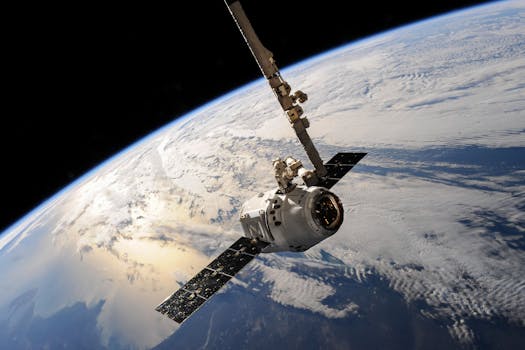MEO Satellites: Revolutionizing Global Communication with Medium Earth Orbit Technology – MEO Satellites

MEO Satellites: Revolutionizing Global Communication with Medium Earth Orbit Technology – MEO Satellites
MEO satellites, or Medium Earth Orbit satellites, are a type of satellite that operates in an orbit between 2,000 and 36,000 kilometers above the Earth’s surface. This unique orbit allows MEO satellites to provide a range of benefits and applications that are not possible with other types of satellites. In this article, we will explore the world of MEO satellites and their role in revolutionizing global communication.
MEO satellites are often used for navigation, communication, and Earth observation purposes. They offer a number of advantages over other types of satellites, including faster and more reliable connections, increased capacity, and improved coverage. MEO satellites are also less prone to interference and have a lower latency than other types of satellites, making them ideal for applications that require real-time communication.
History and Development of MEO Satellites
The concept of MEO satellites has been around for several decades, but it wasn’t until the 1990s that the first MEO satellite was launched. The first MEO satellite was the GPS satellite, which was launched in 1978. However, it was the launch of the Iridium satellite constellation in the 1990s that really marked the beginning of the MEO satellite era. The Iridium constellation consisted of 66 satellites that provided global coverage and enabled real-time communication.
Since then, there have been several other MEO satellite constellations launched, including the Globalstar and O3b constellations. These constellations have expanded the range of applications for MEO satellites and have enabled new services such as broadband internet and mobile communication.
Applications and Benefits of MEO Satellites
MEO satellites have a wide range of applications and benefits. Some of the most significant advantages of MEO satellites include:
Improved coverage and capacity: MEO satellites can provide coverage to remote and underserved areas, and can offer increased capacity and bandwidth.
Faster and more reliable connections: MEO satellites have a lower latency than other types of satellites, making them ideal for applications that require real-time communication.
Increased security: MEO satellites are less prone to interference and can provide secure communication links.
Cost-effective: MEO satellites can be more cost-effective than other types of satellites, as they require less power and can be launched on smaller rockets.
Challenges and Future Directions for MEO Satellites
Despite the many benefits and applications of MEO satellites, there are also several challenges and limitations to their use. Some of the most significant challenges include:
Interference: MEO satellites can be affected by interference from other satellites and terrestrial systems.
Regulatory issues: The use of MEO satellites is regulated by international agreements and national laws, which can create challenges for operators.
Technical limitations: MEO satellites have technical limitations, such as limited bandwidth and power, which can limit their applications.
Future directions for MEO satellites include the development of new technologies and services, such as 5G and IoT. The use of MEO satellites is also likely to expand into new areas, such as Earth observation and space exploration.
Conclusion
In conclusion, MEO satellites are revolutionizing global communication with their unique orbit and range of benefits and applications. From navigation and communication to Earth observation and space exploration, MEO satellites are playing an increasingly important role in our daily lives. As technology continues to evolve and improve, we can expect to see even more innovative applications and services from MEO satellites in the future.




